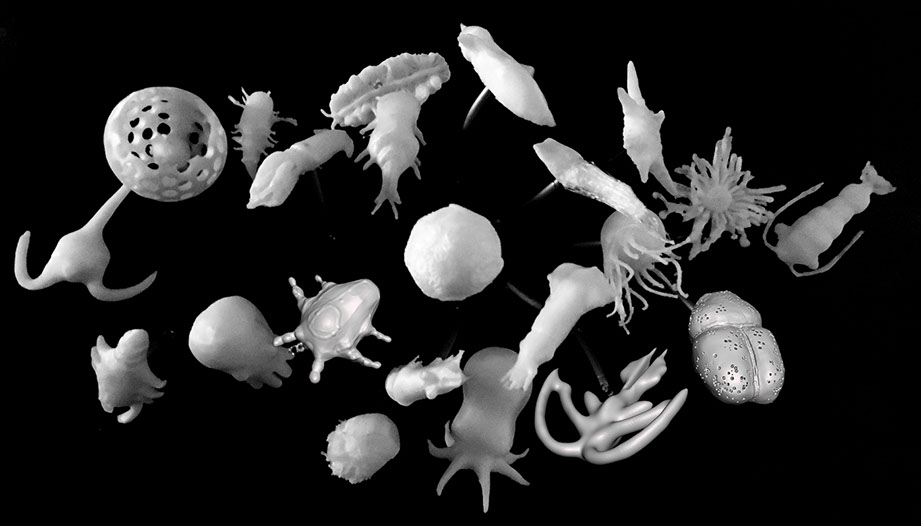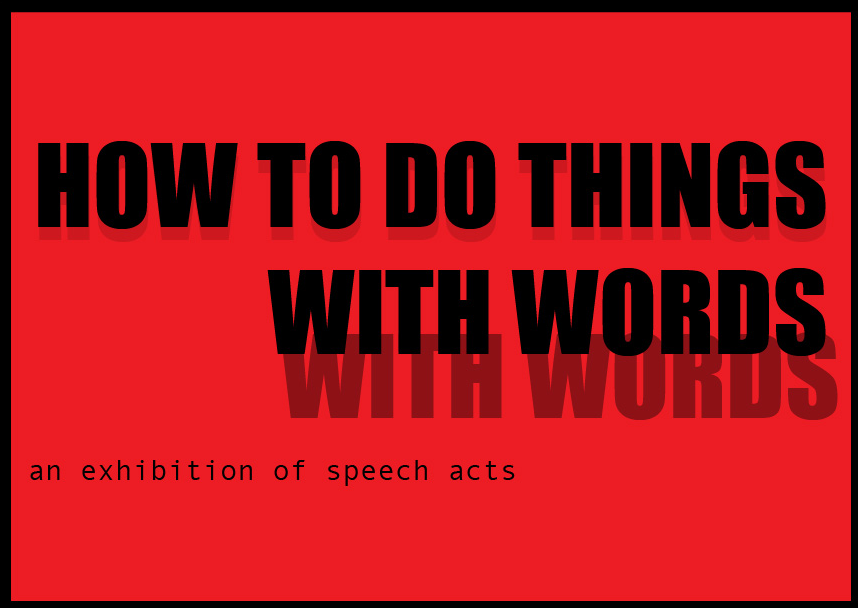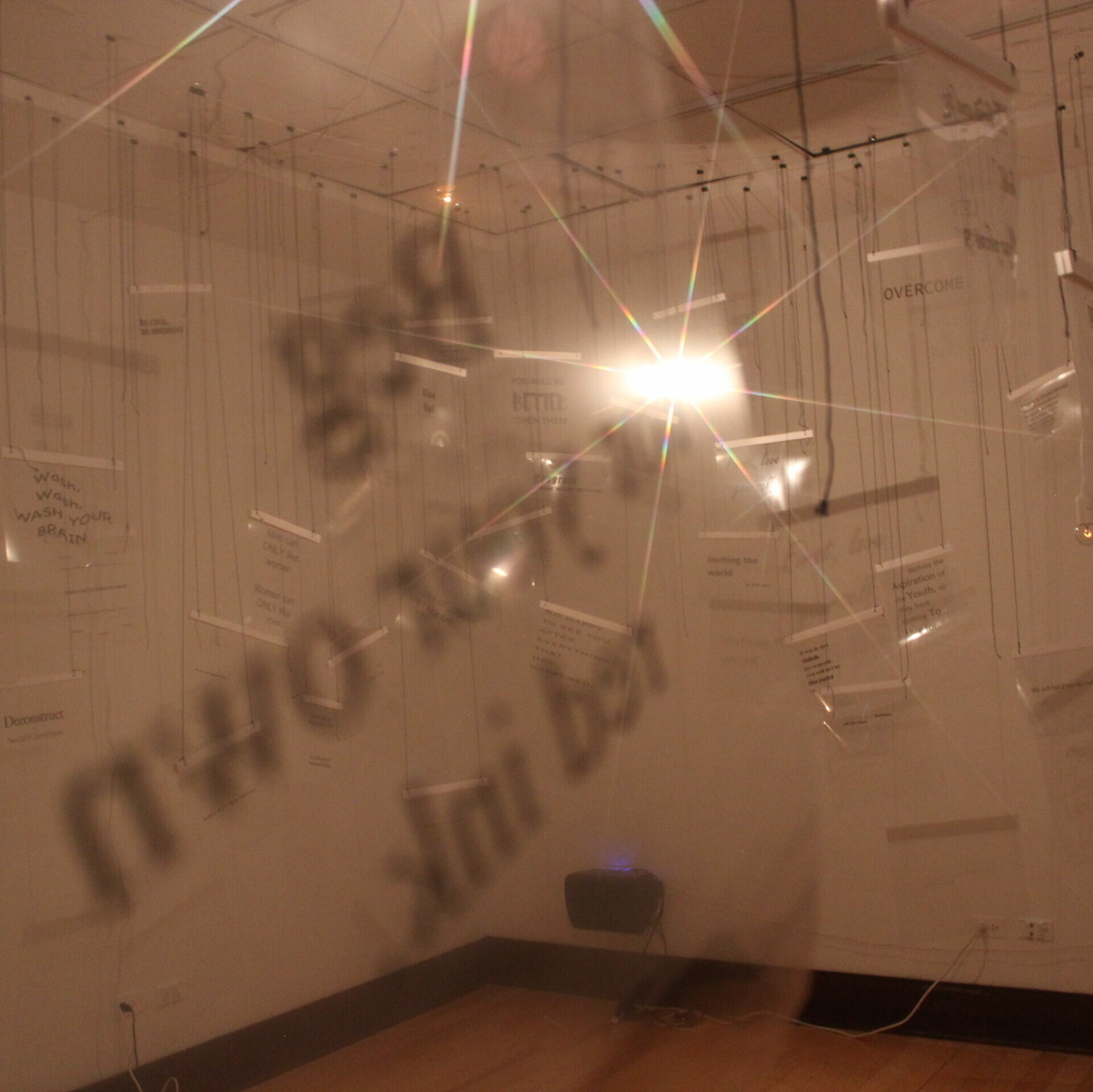
The work shown in this section are examples of projects related to research. Some are projects performed in academic settings with students and others are interdisciplinary collaborations with professionals in diverse fields.
Point of No Return: Interventions of Mass Media Practices
Lake Forest College
2019 Richter Scholars: Danielle Herreweyers and Ensar Uzicanin Richter Mentor: David Sanchez Burr
In our current times mass media advertising firms have spun out various strategies to influence public opinion, ideas, and actions. Shifting from promotion of a product to engaging in the influence of one’s self perspective and our future, media has found a way to affect us all. How does the messaging in the content of these advertisements influence our culture and society? How can a message intentionally deceptive be so widespread and consumable to a general public?
The sophistication of media messaging has increased along with budgets ascending in the millions of dollars. Advertising clients are expecting effective and manicured ideas to come to life on the video screen. A viable alternative to selling a product that may on its most basic description be simply described as an oil and gas corporation, a sophisticated computer and military life is to sell something more desired: innovation, future potential, inclusion in the gestalt of our contemporary world, duty, honor and patriotism.
The challenge of this investigation consisted in creating three different artworks on video that could convey the gap in messaging within commercial advertisement. Using footage of the commercials themselves as well as media associated with the visual imagery we created a new message that is in and of itself a critique of the original advertisement. The work is to help the viewer think about the conveyance of a message and how it is intended to be received. The work also helps illuminate the over-reach that advertising is willing to risk in order to change public opinion.
Audio Activated Kinetic Movement Research Project
Lake Forest College
2018 Richter Scholar: Jake Ngugi
Richter Mentor: David Sanchez Burr
Professor Sanchez Burr has been working for some time on the movement of structures and sculptures through sound and vibration. The kinetic energy produced by these two methods allow for things to move along a platform, seemingly on their own. The result of these efforts were displayed at a number of exhibitions where in some cases the kinetic elements were interactive, meaning the audience was able to control the platforms through actions of their own. The artistic intent of the project is to allow for the viewer to actively engage in an artwork in collaboration with the artist to change the work itself. The intent is symbolic of ideas expressed in democracy and how inclusion and participation change the social, economic and political landscape.
For this Richter Research Scholarship we thought of new ways to create the mechanics of movement as well as refine and perfect control of the movement itself with new platforms and interactive controls. To best express the ideas behind the project, it was decided that two platforms would be constructed. One of the platforms would be manually controlled and the other would be controlled through pitch. Our first task was revising the control box for the manual platform. The control box was initially designed to emulate musical equipment from the past. However, for this project it felt necessary to revise the design and wiring of the box.
One of the major changes involved the installation of new power modules. This provided better control of the motors. The success of this new platform is evident in two ways to the participant: Smoother controls over the kinetic movement on the platform as well as more responsive electronics in the use of PWM (pulse width modulation).
For the second platform we began by testing how sound and volume could be used to control motors. Through the use of a programmable Arduino microcontroller and a microphone we ran several tests but found it to be unreliable mode of control. Instead we decided to use pitch to control the speed and power of the motors. By using a Theremin, we could correlate different pitches with different speeds. Programing required careful analysis of the response of the motors. Various elements needed to be coded onto the Arduino, including smoothing the incoming signal from the Theremin and designing a script that performed exactly as we wanted it to. The second platform pedestal was custom built to accommodate the platform, Theremin and wiring. The presentation is a scaled example of larger projects that Professor Sanchez Burr will be working on over the course of the year. A lot of technical work goes into a project prior to the production of art. Science and new technology have moved forward new means of expression in Art, the artist has to stay apace with technology as it emerges while at the same time make meaningful and impactful work that speaks to and of cultures and society.

Life Aquatic:
A Study of Zooplankton and Phytoplankton
Art 233 Sculpture Spring 2018
The Life Aquatic is an interdisciplinary study of Zooplankton and Phytoplankton in Biology and Art. These diminutive species of organisms live in our oceans and lakes and are an important part of the global ecosystem. Attention to the decline and in some cases the massive blossoming of some of these species has been important. The effect of global warming and ocean acidification has in some cases been catastrophic in areas of our planet. As an important part of the food chain Zooplankton and Phytoplankton play a major role in the health of biological ecosystems. Although we have many images of these species it is rare to see them live and in three dimensions. Students created these models from images found through research online and in our libraries. The models were first sculpted in plasticine and then digitally scanned and manipulated to create three dimensional prints of the diminutive plants and animals. Care was taken to create accurate specimens that mirror what these creatures might look like should we be able to observe them with the naked eye.
The goals of this project were to give students the challenge of sculpting in plasticine and in digital software from two dimensional image references; as well as learning about our fragile ecosystems and the environmental impact of global climate change.
Professors: Dr. Flavia Barbosa and David Sanchez Burr
Staff: Connie Corso and Melissa Norris
Students
Derya Botsali, Zoe Darlington, Imani Davis, Natalie Dixon, Karl Fehn,
Bailey Franks, Ava Gleason, Megan Janda, Hayley Kennedy, Caitlin Lamb,
Julia Lovelace, Fiona McMahon, Hadley Mayse, Kanoe Montano, Jenna Rotunno,
“Waffles” Soeleman, KeAnthony Thompson, Mimi Vaintrub, Allison Watts, Bridget Whited,
Ryan Widmer and James Winkler
The Life Aquatic with Steve Zissou is a Wes Anderson movie made in 2004. We named this project after the movie because we are big fans of Wes Anderson.
For more info scan the QR code below or visit:
http://www.visualart-soundart.com/lifeaquatic/


How to Do Things with Words 2019
Students in my Art for Social Change course have organized an exhibit called How to Do Things with Words at the Deerpath Gallery. Part of their project requires them to seek feedback from the campus community. You may be asked by one of my students to participate in a discussion about the exhibit. We hope that you can swing by Deerpath to check it out.
What is a Speech Act? A speech act in linguistics and the philosophy of language is an utterance that has performative function in language and communication. According to Kent Bach, “almost any speech act is really the performance of several acts at once, distinguished by different aspects of the speaker’s intention: there is the act of saying something, what one does in saying it, such as requesting or promising, and how one is trying to affect one’s audience”. The contemporary use of the term goes back to J. L. Austin’s development of performative utterances and his theory of locutionary, illocutionary, and perlocutionary acts. Speech acts are commonly taken to include such acts as promising, ordering, greeting, warning, inviting and congratulating.
https://en.wikipedia.org/wiki/Speech_act
Process of the Speech Act: It began with an evaluation of our past, present, and future sociopolitical climate(s). The featured artists practiced thorough consideration of a continuum of sociopolitical vantage points and derived creative substance from these perspectives. With this substance, each artist generated three statements which they align with and three statements which they refute. These statements serve as speech acts, and this exhibit serves to invite, greet, warn, order, promise, and congratulate its visitors.
Intentions for our Speech Acts: We recognize that these statements may inspire feelings of agreement, perplexion, dissonance, or opposition. We are representing various points along an expansive sociopolitical continuum. Ideological agreement and opposition remains individual responsibility. and prerogative.
Information:
Monday February 4th, 2019
to February 11th, 2019
Deerpath Gallery
Opening Reception:
Thursday February 7th, 2019 – 7pm
Participating Professor: David Sanchez Burr
Participating Students:
Lily Coyl | Marquise Douglas
Gabrielle Gonzalez-Nagy | Christine Hanna Chantelle Houareau | Noelle L. Larson Song Suk | Jonanthan Tefel
KeAnthony Thompson | Anahita Vahidi Paige Walgreen | Bridget Whited